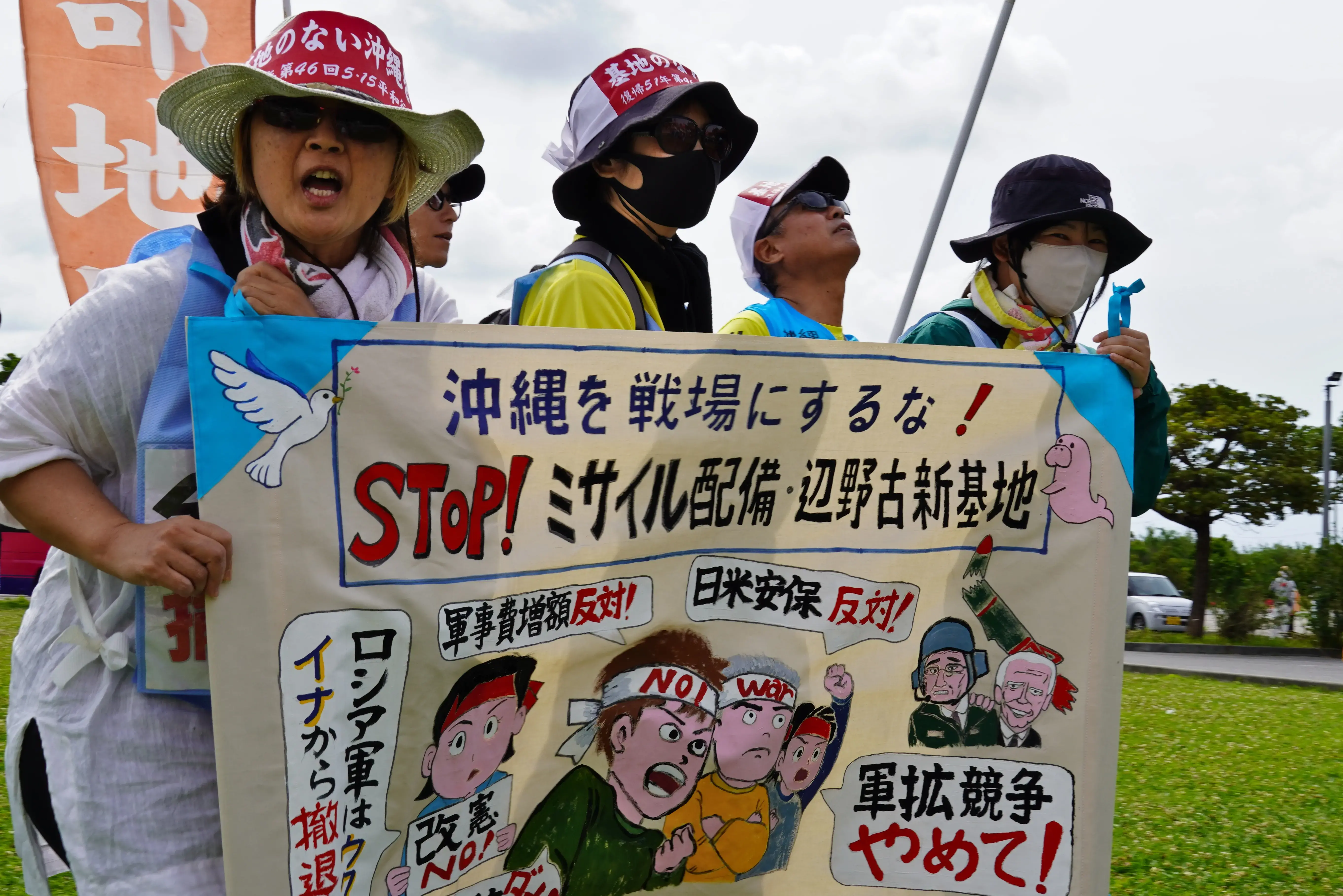
Translated from Danish, this is an excerpt of a report originally published in the newspaper Politiken. To read the original story in full, click here.
The rivalry between China and the U.S. will define the 21st century, and the tropical island of Okinawa lies at the center of contention. Here, many locals perceive the West as hypocritical, and many fear that they once again will be the victims of war. Nightmares of the past still linger in Okinawa, which in World War II was the battleground for the bloodiest fighting in the Pacific. Today, upwards of 55,000 U.S. soldiers and their families and supporting crew are stationed on the island, which retains a key position in the "first island chain" in U.S. military doctrine towards China.
The impact of deployment is felt. Fifteen percent of the main island is occupied by U.S. forces, which, according to local activists, is responsible for mass leakage of dangerous PFAS chemicals into the water systems. Allegations of rape and even murder is another cause for concern among the "anti-base" movement, which during Politiken’s visit to Okinawa staged a major peace walk to protest U.S. presence.
A majority of Okinawans vote for politicians who try to reduce the number of local bases, to little avail. There is even an independence movement, which hopes to leave Japan and reinstate the Ryukyu government of the 19th century.
The tensions on Okinawa are ripe ground for Chinese interference, experts and representatives from the Japanese government argue. They worry that China is conducting influence operations to strengthen and amplify the antibase movement.
Proof of Chinese involvement, however, is scarce, but the allegations alone breed mistrust. With or without malign interference, the Okinawa situation poses a dilemma for U.S. ambitions in the Indo-Pacific. President Joe Biden’s rallying cry is that our world is witnessing a “fight between democracies and autocracies,” where the former must rise to defend its values.
Can that ring true, if the values and needs of a democratic majority in Okinawa are consistently ignored?













